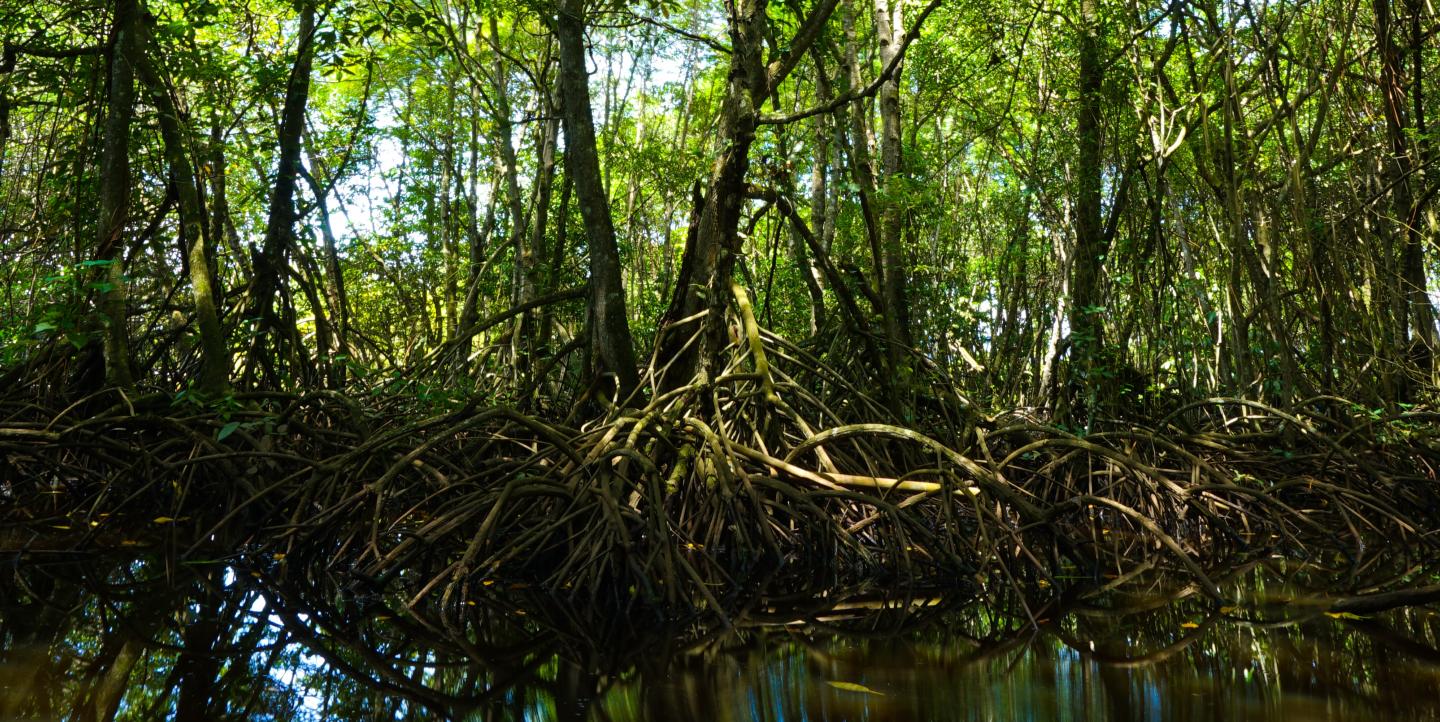Over the past 15 years, erosion has claimed half of Bedono Village, located in Indonesia's Central Java Province. While the village’s mangrove vegetation has been partially destroyed due to construction, erosion has consumed almost 800 hectares off the coast. As a result, thousands of residents fled their communities as seawater rose and inundated their homes.
Coastal erosion, linked to the loss of mangroves, not only occurs in Bedono, but also in many other regions of Indonesia. The rate of destruction of mangrove forests in the country is among the fastest in the world. According to the United Nations World Food Organization, Indonesia lost 40% of its mangroves over the last 30 years.
Mangrove deforestation has made many communities highly susceptible to coastal erosion, with people living on the coast and on small islands being the most vulnerable. Unless the damaged mangrove forest is restored, more severe abrasions will occur with severe consequences for seaside communities.
Noticing a lack of information available digitally about Indonesia’s mangroves, Ganis Riyan Efendi and his colleague Aris Priyono founded MangroveMagz in 2014. The publication is the country’s first and only online magazine dedicated to discussing mangrove conservation, with the goal of increasing public awareness of the destruction of mangroves and its consequences.
Spotlighting the issue
MangroveMagz focuses on three main topics: the mangroves themselves, the people who love them and various activities focused on their conservation. Efendi and his team deliver their reporting in the form of videos, essays, news and even children's fairy tales on their website, Youtube and Instagram. Several sections of the website include research, profiles, tours, tips, culinary and cultural facts.
The magazine is managed by mangrove conservation activists who are members of the Teluk Awur Mangrove Ecosystem Study Group (KESEMAT), a student organization from Diponegoro University. Its members are spread across 12 cities throughout Indonesia.
Efendi, the magazine’s editor-in-chief, believes that personal stories need to be told by the media to bring readers closer to issues around mangroves. This kind of content is also easier for people from various backgrounds to understand, rather than simply publishing the results of research or scientific writing.
"Simply knowing what mangroves are, their benefits, [and] buying products made from these plants, will support their conservation efforts," said Efendi.
Changing perspectives
Hani Ristiawan’s story, for example, discusses his experience exploring ancient mangrove forests in the Leuweung Sancang Nature Reserve, Garut, West Java. He found a mangrove forest that was still untouched, featuring an amazing ecosystem of endemic flora and fauna.
There is also a story by Sari Poncowati about her experience of visiting Mangunharjo, a village on the coast of Semarang City, Central Java. In recent decades, this area has experienced massive mangrove forest destruction due to land conversion. Now, mangrove planting is being promoted in this area along with the increasingly severe abrasion.
The damage to mangroves in Indonesia continues to occur along with massive coastal development, according to Priyono. This is accompanied by a lack of information and communication regarding the importance of mangroves. "So public awareness to conserve mangroves is lacking," said Priyono, who is also an editor at MangroveMagz. "That's why MangroveMagz tries to fill this information gap."
Sri Weni, a MangroveMagz reader, said that the outlet has contributed to broadening her knowledge about mangroves and their benefits. "I [now] know the extent of the damage [done] to the mangroves and what contribution I should make to preserve them," said Weni, who is a junior-high school teacher.
Weni said a lot of damage was done to the mangroves because there was a lack of public knowledge about this ecosystem. "I'm sure if people know the benefits of mangroves, they will not easily damage them," she said.
Embracing young people
MangroveMagz also runs several community empowerment-based programs, including journalism trainings. These activities may incorporate mangrove planting, community empowerment workshops, research, campaigns and documentation about mangroves. "MangroveMagz provides information and activities carried out by our community network at the local, national, regional and international levels," said Efendi.
One of the causes of mangrove logging in Indonesia is the lack of environmental education curriculum in schools, especially those related to the coastal environment, Efendi noted. As a result, MangroveMagz creates content for children including fairy tales and cartoons. To gain the attention of young readers, Efendi and his team also make podcasts, broadcast web series, develop YouTube channels and organize an annual volunteer event.
"Young people are the most important agents in the success or failure of efforts to conserve mangrove forests. They must be given an understanding of mangroves and the issues surrounding them. So that in the future, they will not become a generation of destroyers, but a generation that cares about environmental sustainability," said Efendi.
A lifestyle to preserve mangroves
In the future, MangroveMagz aims to serve as an information center about mangroves, not only publishing the work of its contributors but also pieces from the wider community. "We think that mangrove conservation can not only be carried out by coastal communities, but also the wider community. All are interrelated and must help each other in this campaign," said Efendi.
People must respond quickly to the threat human activities and the climate crisis pose to the environment, Efendi urged. For him, campaigning for mangrove conservation is one of the efforts to prevent massive damage. "We want mangrove conservation efforts to become a lifestyle, meaning that topics around mangroves become a daily discussion and efforts to preserve them become a habit," he said.
Photo by Aldino Hartan Putra on Unsplash.


